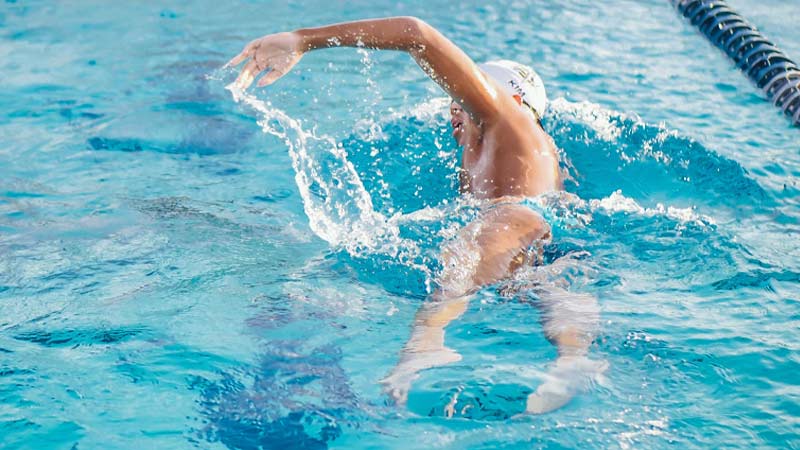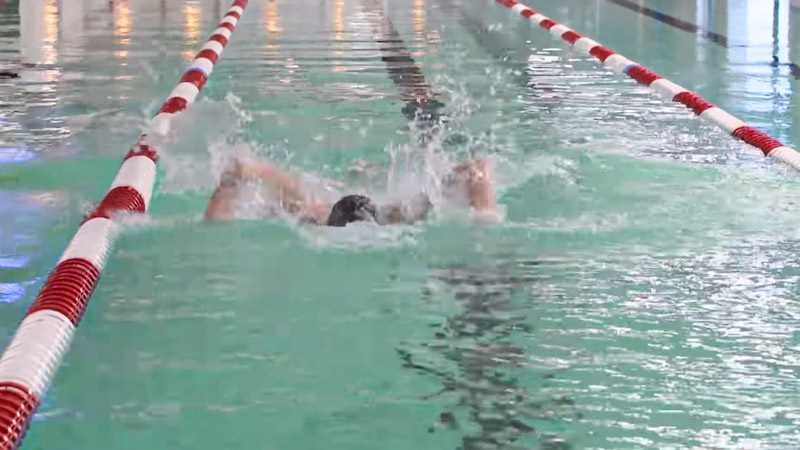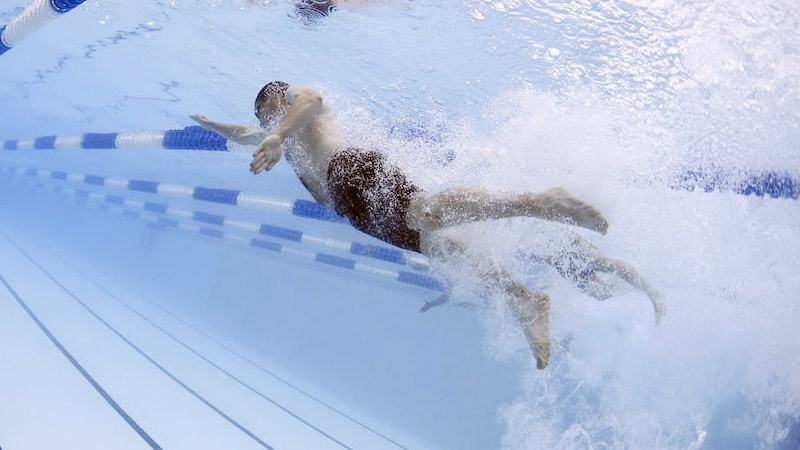Swimming with a torn meniscus offers a compelling avenue for healing. As a condition marked by pain and restricted mobility in the knee, a thoughtful exercise approach becomes pivotal.
Swimming, renowned for its low-impact attributes, becomes an appealing option. The gentle resistance of water cushions joints, making it conducive to recovery.
Beyond its therapeutic buoyancy, swimming engages various muscle groups, fostering strength, and enhancing overall flexibility.
This introduction explores the potential benefits of swimming, emphasizing its role in not only mitigating the impact on the injured knee but also promoting a holistic recuperative journey for individuals grappling with a torn meniscus.
What Is a Torn Meniscus?
A torn meniscus refers to damage in the crescent-shaped cartilage of the knee, compromising its crucial role in stabilizing and cushioning the joint.
This common knee injury often results from sudden twisting or over-flexing, causing the cartilage to tear.
The symptoms encompass pain, swelling, stiffness, and limited range of motion. Torn menisci can occur during athletic activities or due to degeneration over time.
Diagnosis typically involves physical examination and imaging studies. Treatment options range from rest, ice, and physical therapy for minor tears, to surgical intervention for severe cases. Recovery varies, emphasizing the need for personalized medical guidance.
Is Swimming Good for a Torn Meniscus?

A torn meniscus is a common knee injury that can cause pain, swelling, and limited range of motion.
Swimming with a torn meniscus can be a beneficial form of exercise for individuals recovering from a torn meniscus.
The meniscus is a C-shaped cartilage in the knee that provides stability and cushioning.
When it’s torn, it can lead to pain, swelling, and limited range of motion. Engaging in the right type of exercise is crucial for rehabilitation, and swimming offers several advantages for those with a torn meniscus.
Low-Impact Exercise
Swimming stands out as a low-impact exercise due to the buoyancy of water. The natural buoyancy supports the body, reducing the gravitational force on the joints.
This is particularly crucial for individuals with a torn meniscus, as it minimizes the stress on the knee joint during physical activity.
The controlled environment of the water allows for fluid movements without subjecting the injured knee to the jarring impact that may occur with activities like running or jumping.
Range of Motion Improvement
The varied motions involved in swimming contribute to the improvement of joint flexibility and range of motion.
Different strokes, such as freestyle, breaststroke, or backstroke, engage the knee in diverse ways, promoting flexibility.
The resistance provided by the water also adds a gentle yet effective challenge, encouraging the gradual restoration of a fuller range of motion in the injured knee.
Muscle Strengthening
Swimming engages multiple muscle groups, offering a comprehensive workout for the entire body, including the muscles surrounding the knee joint.
The quadriceps, hamstrings, and calf muscles play a pivotal role in knee stability, and swimming helps strengthen these muscles without subjecting them to excessive strain.
As the muscles around the knee become stronger, they contribute to better joint support and overall knee function.
Reduced Swelling
Hydrostatic pressure, a key feature of water, aids in reducing swelling around the knee. This pressure helps improve circulation and lymphatic drainage, assisting in the reduction of inflammation.
Additionally, the cooling effect of the water can have a soothing impact on the injured area.
These combined effects create a favorable environment for healing by addressing one of the common challenges associated with a torn meniscus – swelling.
Cardiovascular Benefits
Beyond its benefits for the musculoskeletal system, swimming is an excellent cardiovascular exercise.
It enhances heart health, contributing to improved circulation and oxygen delivery throughout the body.
This increased blood flow can support the healing process by providing essential nutrients to the injured tissues.
Moreover, the cardiovascular benefits of swimming contribute to overall well-being and may positively impact the patient’s energy levels and mood during the rehabilitation period.
Can You Swim With a Torn Meniscus?

Swimming with a torn meniscus can be a viable and beneficial form of exercise during the rehabilitation process, but certain considerations should be taken into account.
A torn meniscus, a common knee injury, involves damage to the cartilage that cushions the knee joint.
Engaging in activities that put excessive strain on the knee can exacerbate the injury, making it crucial to choose exercises that are gentle on the joint while promoting healing.
Swimming is often recommended for individuals with a torn meniscus for several reasons. The buoyancy of water reduces the impact on the joints, offering a low-impact environment for movement.
This can be particularly advantageous compared to weight-bearing exercises that might place additional stress on the injured knee.
The fluidity and range of motion involved in swimming can contribute to the improvement of joint flexibility without causing undue stress to the meniscus.
The controlled and rhythmic movements in the water allow for a gradual and controlled rehabilitation process.
Additionally, swimming engages multiple muscle groups, including those around the knee, aiding in overall strength and stability.
However, it is crucial to approach swimming with a torn meniscus with caution and under the guidance of a healthcare professional or physical therapist.
Here are some considerations:
Consultation with Healthcare Professionals
Before embarking on any exercise routine, especially with a torn meniscus, seeking professional guidance is paramount.
A healthcare provider or orthopedic specialist can conduct a thorough examination to assess the extent of the meniscal tear and provide specific recommendations based on the individual’s overall health.
They may also take into account any additional factors, such as concurrent injuries or underlying conditions, that could impact the choice of exercises.
Gradual Progression
Gradual progression is key when incorporating swimming into a rehabilitation plan for a torn meniscus.
Starting with low-intensity activities, such as gentle laps or water walking, allows the individual to gauge their tolerance and ensure that the knee responds positively to the exercise.
As the healing progresses, gradually increasing the intensity and duration of swimming sessions can be considered.
It’s essential to listen to the body and refrain from pushing too hard, especially if there is any pain or discomfort.
Proper Technique
Employing proper swimming technique is crucial for individuals with a torn meniscus. This includes focusing on controlled and smooth movements to avoid sudden jerks or twists that might strain the knee joint.
Engaging in strokes that do not excessively stress the knees, such as the breaststroke or backstroke, might be more suitable.
Working with a swimming coach or physical therapist can provide valuable guidance on technique and ensure that the exercise is performed in a way that supports, rather than hinders, the healing process.
Individualized Approach
Every individual’s condition is unique, and rehabilitation plans should be tailored accordingly.
A physical therapist can create a personalized swimming program that aligns with the specific needs and limitations of the torn meniscus.
This individualized approach considers factors such as the severity of the injury, the individual’s fitness level, and any other health considerations.
Regular check-ins with the physical therapist can help adjust the exercise plan as the knee heals and strength improves.
FAQS
Can I Swim With a Meniscus Tear?
Yes, you can swim with a meniscus tear and it will help you to maintain cardiovascular fitness.
Is Swimming Good for a Meniscus Tear?
Yes, swimming is a good form of exercise for a meniscus tear.
Is Swimming Bad for a Torn Meniscus?
No, swimming is not bad for a torn meniscus
Can Pool Temperature Affect Recovery?
The temperature of the pool can impact your torn meniscus recovery. Warmer water may help relax muscles and joints, promoting flexibility.
To Recap
Swimming emerges as a favorable rehabilitative option for a torn meniscus, offering a blend of low-impact benefits, joint-friendly movements, and comprehensive muscle engagement.
The buoyancy of water minimizes stress on the knee, fostering a gentle yet effective environment for recovery.
This exercise form not only aids in improving range of motion but also contributes to muscle strengthening and cardiovascular health.
However, individualized guidance from healthcare professionals is paramount, ensuring a carefully tailored approach to swimming that aligns with the specific needs and progress of each patient.
Embracing swimming cautiously, within recommended parameters, can be a buoyant path toward restoring knee health and overall well-being.







